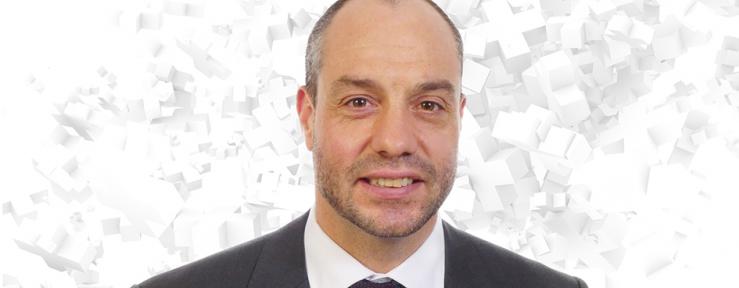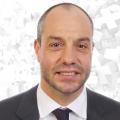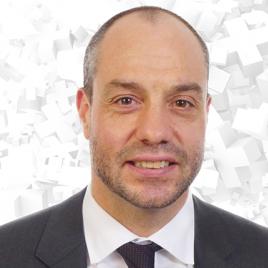For those that do not know SwissZinc, can you please briefly describe what SwissZinc is and does?
SwissZinc is a company created by the operators of waste-to-energy (WtE) plants in Switzerland. The purpose of SwissZinc is to extract the Zinc and the other metals contained in the flyashes of the swiss waste-to-energy plants.
There are currently 29 waste-to-energy plants in Switzerland, treating about four million tons of waste annually. All waste-to-energy plants are fitted with highly efficient flue-gas cleaning system. Flyashes are retained in the dust abatement units of the WtE plants. In total, about 80’000t of flyashes are collected annually.
The flyashes are a very fine grey powder, containing about 5% Zinc. Compared to a natural Zinc ore, a Zinc content of about 5% is not very high. But the WtE-Flyashes have the advantage of being a fine-grained powder, so there is no need for crushing and grinding the ore, the two initial and very energy-intensive steps of primary mining.
With the SwissZinc-Project, we want to recover that Zinc, as well as some copper and silver which is also contained in the flyashes.
To this end, we are currently in the engineering phase of a zinc recovery facility, which will be located in Zuchwil (Canton Solothurn) and produce 2’000 tons of Special High Grade Zinc per year. The operation should start in 2026.
What are the opportunities for SwissZinc? And why?
With the SwissZinc project, the Swiss Waste-to-Energy industry will move the waste treatment technology one great step further: Instead of just landfilling the solid residues from the thermal treatment of waste, which is the standard practice worldwide, we will extract all the remaining metals. We will carry out this metal extraction by using hydrometallurgical processes, which are much less carbon-emitting than high-temperature pyrometallurgical processes. In a nutshell, the opportunity for SwissZinc is to establish the hydrometallurgical treatment of residues from the thermal valorisation of waste.
SwissZinc could give Switzerland the chance to have new sources of important “raw materials”, how do you rate this?
Indeed, with the SwissZinc plant we will cover more than one third of the annual zinc consumption of Switzerland. Moreover, our Zinc will have a very low carbon footprint. The swiss industry has already signalled a strong interest in purchasing our low-carbon Zinc.
What challenges do you face with developing a new business with this?
The investment costs for an industrial facility such as the SwissZinc plant are very high, because the process must be highly automated and must of course fulfil the very stringent requirements of the Swiss environmental legislation.
Another challenge lies in the communication: SwissZinc will be part of the waste-treatment infrastructure of Switzerland. As a part of the infrastructure, it is not profit-oriented. On the contrary: it will be required by law to operate according to the polluter-pay principle, meaning that SwissZinc will have to cover its costs, but will not be allowed to generate a profit. As a part of the infrastructure, we can’t present a classical business plan like any Start-up.
I am convinced that we are developing a disruptive technology with the potential to greatly improve the waste-treatment industry worldwide. But we are developing this innovation in an infrastructure setting and we can’t rely on the usual financing instruments for commercial start-ups
What help has S-GE/ cleantech mandate give you in gaining international business interest?
We want to demonstrate that our approach works. We want to bring waste-to-energy to the next level and showcase this in Switzerland. We hope that other countries will then replicate our system. Working with an organisation such as S-GE can help us make this technology known and recognised abroad
Finally, Swiss Zinc represents a positive contribution to waste management and material recovery, How soon after its implementation do you think this can be replicated in projects abroad and what is needed?
Actually, all the technology elements for the SwissZinc projects already exist. We are just combining them in a new way, basically applying proven mining technology not to a primary zinc ore dug out of the ground, but to a residue of the thermal treatment of waste. As soon as the SwissZinc-facility is up and running, it will demonstrate that this approach works. Since the SwissZinc project puts existing technologies to a new use, our approach can be replicated quickly and become a standard add-on to the waste-treatment infrastructure abroad. Worldwide, the thermal treatment of waste is ramping-up very fast, producing about 4.5 Mio.t of Flyashes per year, currently being landfilled. With the landfilling of these millions of tons of flyashes, humanity loses more than 220’000t of Zinc per year. We will demonstrate that this material stream can be recovered and I hope the SwissZinc-approach will become a standard worldwide.
I am open to talk to you about this! https://swisszinc.ch/index.html




